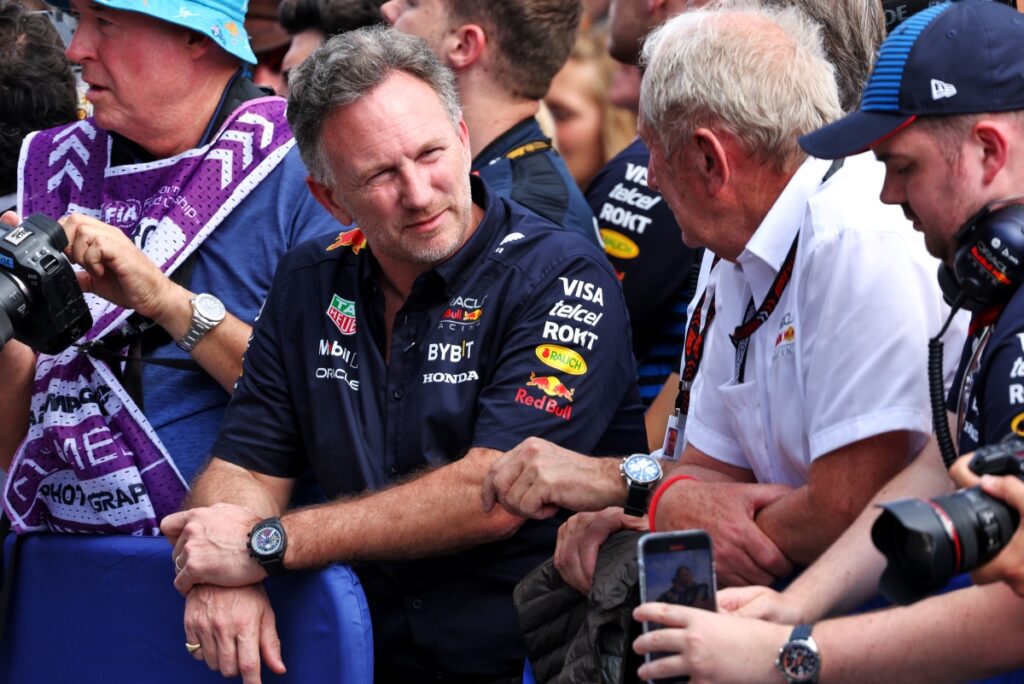Tyre Trouble: How Max Verstappen Nearly Lost the Imola GP

The Formula One world was abuzz as Red Bull’s star driver, Max Verstappen, faced an unexpected challenge during the Imola Grand Prix. What started as a dominating performance almost ended in defeat, and team principal Christian Horner has shed light on the dramatic turn of events.
Dominance Turned to Distress
Entering the weekend, Verstappen had overcome initial balance issues to secure pole position, setting the stage for what seemed like a Red Bull masterclass. With an eight-second advantage over his closest competitor, Lando Norris, the victory appeared all but certain. However, Formula One is a sport known for its unpredictability, and the Imola GP was no exception.
As the race progressed, especially in the second stint on hard tires, Verstappen started to experience a noticeable dip in pace. According to Horner, it was a drop in tire temperature that instigated the sudden performance decline.
The Temperature Conundrum
“As the tire’s gauge wore down, maintaining temperature became critical,” explained Horner. “Initially, we were comfortable, but as degradation took its toll, we couldn't keep the tires within the optimal temperature range. This enabled Lando Norris to close the gap significantly in the final laps.”
The hard compound tire failed to provide the performance stability that Red Bull had hoped for, a stark contrast to the earlier stint on medium tires. “On the mediums, Max could widen the lead substantially, but the hards posed a different challenge altogether,” Horner summarized.
 Helmut Marko in the pits" />
Helmut Marko in the pits" />The Norris Factor
Meanwhile, Lando Norris, initially struggling with Charles Leclerc, found new vigor and began a solid charge in the latter half of the race. “Lando was hot on our heels once he overcame Leclerc's threat,” Horner noted. Norris ultimately finished just seven-tenths of a second behind Verstappen, narrowly missing out on the win.
Track Limits Complexity
Besides tire temperature, another crucial factor that made the race nerve-wracking was track limits. Verstappen's race engineer, Gianpiero Lambiase, frequently cautioned him about potential track limits violations. “Max was already on three strikes, and a single misstep could have drastically altered the outcome,” said Horner. Despite the enormous pressure, Verstappen managed to maintain his composure and narrowly avoid a race-wrecking penalty.
Strategizing for the Future
Horner admits that part of the problem could have been mitigated by better data collection in practice. “In hindsight, we probably should have tested the hard compound on Friday to better understand its performance criteria. We opted to save two fresh sets for the race, and that decision nearly backfired,” he admitted.
Reflecting on what could have been a disastrous result, Horner praised Verstappen's resilience. “Given the performance turnaround from Friday and securing both pole and the win, it’s been an exceptional effort,” he affirmed.
As for the implications of another couple of laps, Horner candidly said, “Another lap or two, and we’d have been at significant risk, particularly on fuel.”
The Takeaway
The Imola GP served as a stark reminder that in Formula One, every detail—from tire temperature management to strategic decision-making on testing days—plays a pivotal role. As Red Bull continues its quest for dominance, lessons from races like Imola provide invaluable insights for future challenges.
Ultimately, the race demonstrated Verstappen's skill and mental fortitude, keeping fans at the edge of their seats until the very last moment. And for Norris, it proved that the battle for supremacy in F1 is closer than ever.